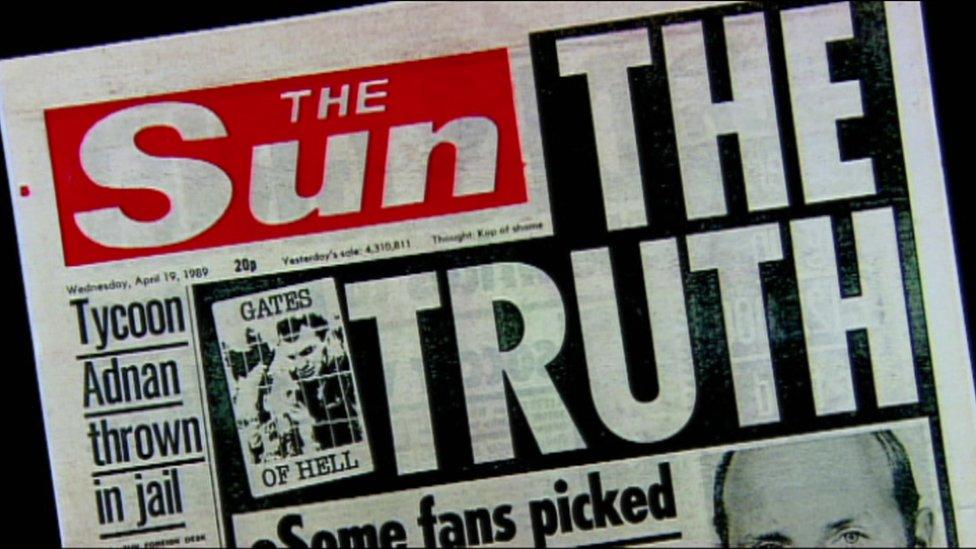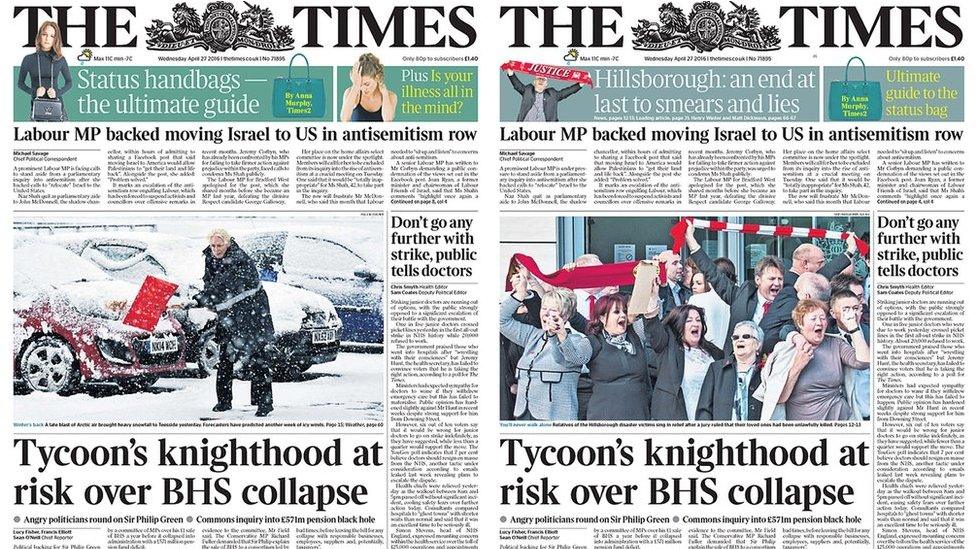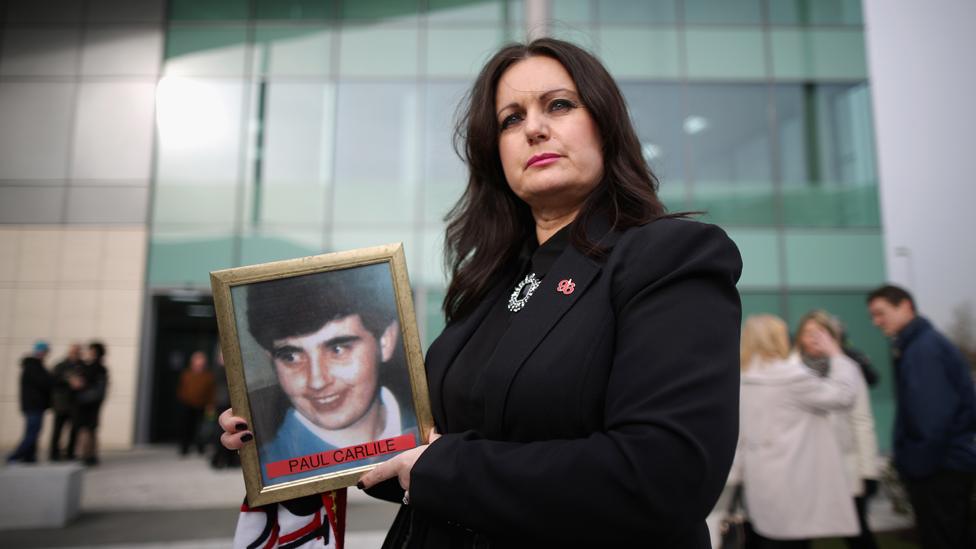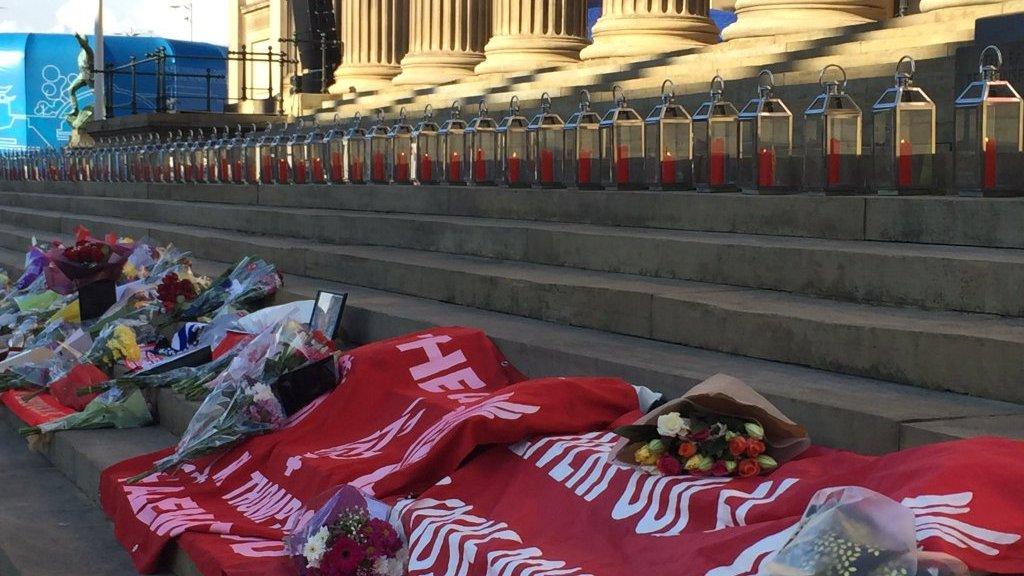Sun's Hillsborough front page 'symbol of lies and cover-up'
- Published

"Do I wish to God I hadn't done that front page? Yes."
Kelvin Mackenzie is a man of bullish self-confidence; the former editor of the Sun who, in 1989, laid out a front page splash telling us "The Truth" behind Hillsborough. It claimed some fans picked pockets of victims, urinated on police officers and beat up one officer as he gave the kiss of life. Almost every word has turned out to be untrue. There was, at the end of his brief interview with BBC TV today, a slight tremor in his voice as he admitted that "there has been collateral damage".
The infamous front page which blamed the fans for the Hillsborough tragedy was not just an insult to the victims and a stupefying journalistic failure, it has become the public symbol of the lies at the heart of the cover-up.
If you want to understand its power and significance have look at the front page of the Metro. The layout is a copy of the Sun from 1989.
So when today's Sun and the Times front pages were released on the day after the verdict with no mention of Hillsborough on the front page and a single word tweet, external "unbelievable" appeared from Tony Barrett, the Times Liverpool football writer, most drew the same conclusion. It appeared that the topic of Hillsborough had become so toxic for Rupert Murdoch's newspapers that they were incapable of covering what was without any doubt the biggest story of the day on a front page.
Kelvin MacKenzie: " I was completely duped"
The response from the Sun today?
"This morning The Sun devoted a double-page spread and the majority of its editorial to the Hillsborough verdict. The Sun apologised in 2012 and have done so again today."
The Times said it had "made a mistake with the front page of our first edition, and we fixed it for the second edition".
However, this runs much deeper than just anger about a newspaper headline. Kelvin Mackenzie's claim today is that he was "completely duped" and that he was a victim of a "black" operation to smear the fans and protect the police. The feeling among many in Merseyside (where many are still boycotting the Sun) is that the Sun carried out the public opinion groundwork that led to 27 years of injustice.

Police and fans carry away an injured fan from the scene at Hillsborough
It is, though, worth remembering how different football was in 1989. Watching the footage of police on the pitch, it is fascinating to see how, as the tragedy unfolded, they were still positioned as if this was a public order issue not one of saving lives. Football was for some simply associated with the words hooligan and violence.
Match days across Britain were often marked by street fights and arrests. The story that appeared on the front page appealed to every prejudice about football fans at the time.
The fact that there were thousands of witnesses and that it had unfolded in front of the TV cameras made not a jot of difference. The story of fans picking pockets, attacking the police and causing the crush fitted the narrative of the age. It made a good story. Twenty-seven years on that story has finally been destroyed and, with it, some of the reputation of what is still Britain's most read newspaper.
- Published27 April 2016

- Published27 April 2016

- Published27 April 2016

- Published26 April 2016
